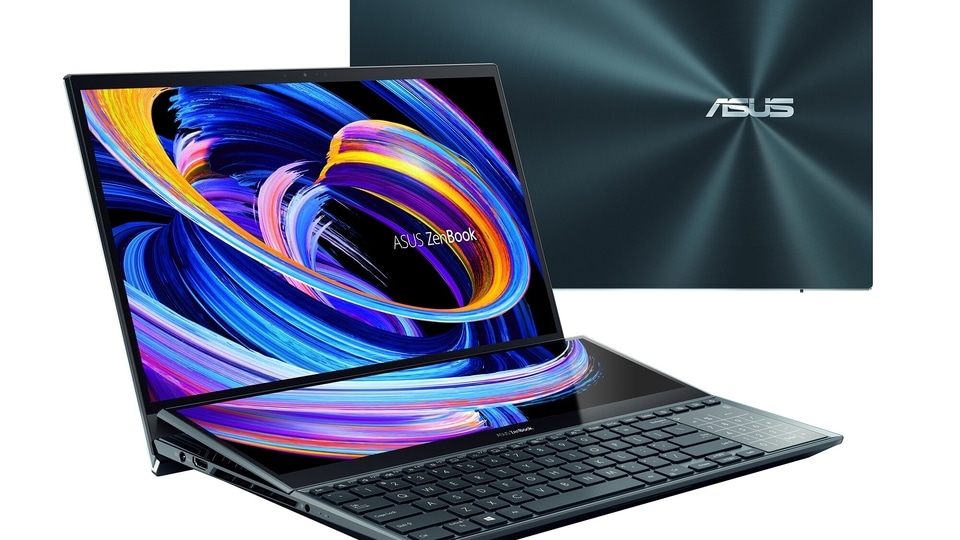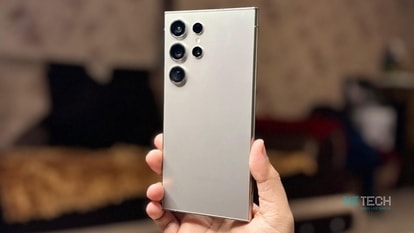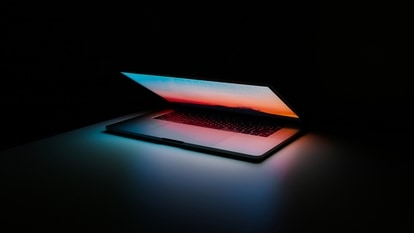OLED: Creating an experience for users of tomorrow
If the last one year has significantly changed one thing it's our mean screen time. This has witnessed a significant rise over the last year, so, obviously, the screen we look at matters all the more now.

Taking a close look into the world around us, we see that almost everyone moves about with gazes averted, their eyes cast down on the device clutched in their hand. Innovation in the personal technology space has completely changed the way we indulge in entertainment, engagement, and interaction with our communities these days, especially as seen in the past couple of years. We are living in an era which is referred to as the ‘Age of Screen', where people are surrounded by technology for almost everything. Ranging in sizes from two inches on our smartwatches to massive digital billboards, smart screens today are penetrating every industry. Even while staying indoors, display technology plays an important role in everyday life as we spend most hours of our day glued to some form of the screen, be it television, smartphones or laptops. The 2020 Nielsen report further confirms that adults are spending more than 13 hours a day on screens, a significant increase from 10 hours a day in 2019.
The start of 2020s has brought a huge shift in our lifestyle. Our world has moved drastically from physical to digital, or rather to a phygital ecosystem in the last one year. Pandemic-induced lockdown bounded us to stay at home, which gave us an opportunity to find alternatives to the things which had kept us occupied in our lives so far. Personal meetings became video conferences, theatre turned to binge-watch, outdoor sports became online games, the gym was taken over by online fitness sessions, schools turned to digital classes, and work from home became the new normal. All of this has transformed our daily living style, boiling it all down to one thing – increased screen time. As we delve into how the display is shaping our present and the future, let's ponder upon the evolution of display technology to start with – a journey from monochrome screen to interactive flat panel. From the development of Cathode Ray Tube, the first display technology to LED, LCD, Plasma and now OLED, screens today have evolved to become more flexible, interactive, and smart. This is what the generation needs – their device to be faster, productive, and intelligent.
OLED displays have been long known and seen being used successfully in TVs and flagship smartphones for years. However, in the recent past, adoption of OLED technology has become more mainstream, making its way to Personal Computers. Laptops have emerged as essential tools in people's lives. We use them for study, work, and entertainment: watching content, playing games, and creating everything we can. The hybrid work and study models along with the adoption of online gaming as a new hobby and the need for quality content, have further accelerated the demand for powerful laptops enveloped with best-in-class features, including a good display for advanced viewing. OLED has become a more preferred option when it comes to selecting a PC with the best display technology. No matter how good a movie, art, or content is, if the output is not good, you will not get the impact it is set to make. OLED panels are enhancing consumer experience by offering ultrafast response time and improved image quality - better contrast, higher brightness, fuller viewing angle, a wider color range, with much faster refresh rates. It consumes less power and is leading to the advent of ultra-thin, flexible, foldable, and transparent displays, opening up a whole world of possibilities for OEMs by boosting the overall product design. The consideration becomes more interesting for content creators and professionals – photographers, designers, and others who are into editing video, photos, and doing web development, who are looking for devices that help them boost their skills by offering the best-in-class innovation. Not only for creators, but these features are also making OLED laptops an ideal choice for consumers into content consumption, binge-watching, gaming, and prolonged office work. The growth of the OLED panel market is accelerating as the panels are increasingly being used by manufacturers in product development. The increasing use of OLED displays in smartwatches, laptops, and other devices is expected to propel the OLED market further in the coming years. More product manufacturers are embracing flexible OLEDs, as these displays, in addition to being lighter and more robust than rigid glass-based displays, are giving them design freedom, and have made us experience some of the most fascinating laptop designs such as 2-in-1 convertible, dual-screen, etc. laptops in past few years. However, OLED devices have also remained in conversation due to its premium price factor. The cost of deploying new-age technology has always been high but with OLED laptops gaining share as a mainstream device, brands and manufacturers have understood the importance of making OLED as more mainstream and are constantly working towards cutting cost to introduce laptops at competitive pricing.
The extra time spent with our devices may lead to more productivity or entertainment, however, prolonged gazing at a screen can cause eye redness, dryness, grittiness, and tiredness, along with headaches, sleepiness, eye pain, shoulder and back pain, and blurred vision for both near and distant objects, thereby hampering one's productivity. Studies have shown that constant exposure to blue light can damage retinal cells, causing vision problems like macular degeneration and permanent vision loss, in later life. Additionally, too much exposure to blue light also affects sleep cycles by blocking the sleep-inducing hormone, thus increasing alertness and resetting of the body's internal clock, causing experts to strongly recommend everyone to stop using any form of the screen – televisions, smartphones, and laptops, for at least a couple of hours before bedtime. OLED laptops, in comparison with any standard LCD screen, deliver 1.3x higher perceptual brightness, allowing users to view any content with higher clarity, even on lower brightness. OLED displays also cut down the harmful blue light by 70% as compared to LCD screens. This results in less brightness and blue light radiations reaching your eyes and thus contributes to increased overall comfort when working on a laptop for extended periods of time.
OLED technology or OLED featuring products are increasingly gaining mindshare and eventually the market share in the industry. The shift in perception is enabling consumers to see the advantage of owning a good display device and at the same time helping them understand that an OLED display is more of a necessity than a luxury. Not just an enhanced viewing experience during work or play, investment in an OLED display unlocks many long-term benefits for users. Nevertheless, the goodness of an OLED can be better experienced on a bigger, laptop-sized display, and hence buying a laptop with the technology now means one will be well future-proofed. With the costs of OLED devices continuing to fall, the future of the market looks stronger and is all set to grow multifold in the coming years. Market research firm Omdia further confirms that OLED laptop market will grow from 150,000 units in 2019 to 2.57 million in 2022, which only means that OLED display has become an absolute winner, promising larger penetration of OLED laptops while assuring wellbeing of the users and ensuring a smarter future of devices.
This article has been written by Arnold Su, Business Head, Consumer and Gaming PC, System Business Group, ASUS India
Catch all the Latest Tech News, Mobile News, Laptop News, Gaming news, Wearables News , How To News, also keep up with us on Whatsapp channel,Twitter, Facebook, Google News, and Instagram. For our latest videos, subscribe to our YouTube channel.

























